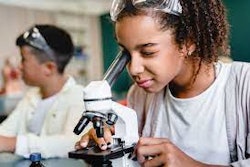As a college undergraduate, Dr. Leticia Márquez-Magaña found herself the only Latina in most of her upper-division science classes, causing her to doubt the wisdom of becoming a scientist. After all, if no one like her pursued such a career, then surely it was one that brought no benefit to Mexican-American communities, she reasoned.
She considered changing her major to liberal arts, but decided not to after a supportive professor pointed out that, if she became a research professor, she would serve as a role model for other female and minority students while simultaneously indulging in her fascination with science.
Since joining San Francisco State University in 1994, Márquez-Magaña, a biology professor, has mentored as many underrepresented minorities as possible, urging them to seek science careers.
But as recently as 2012, only 23 percent of SFSU seniors who graduated in the biomedical and behavioral sciences were underrepresented minorities—even though biology was the second most popular major behind business.
This semester, Márquez-Magaña’s upper-division, interdisciplinary research skills course has only two Blacks out of 24 students. Meanwhile, the 26,000-plus undergraduate student body is made up of 33 percent Blacks and Hispanics combined.
Márquez-Magaña and other faculty aim to boost the proportion of underrepresented minorities who are biomedical and behavioral sciences majors in the annual graduating class to 40 percent. Aided by a new $17 million National Institutes of Health grant to SFSU, they plan to attract more minorities to the sciences by engaging them in community-based research that helps improve the neighborhoods where students live. To do so, the faculty will create new academic courses as part of the SF BUILD program, which stands for Building Infrastructure Leading to Diversity Initiative.
For instance, entry-level courses could focus on problems in local, urban communities, Márquez-Magaña says. Students in organic chemistry could measure and collect data on environmental toxins that plague some neighborhoods, such as those caused by the dumping of industrial waste.
Márquez-Magaña believes that rethinking the pedagogy and revamping the curriculum can better attract students of color who are interested in social justice. Many of the students who seek her out for career counseling have seen harm come to relatives or friends who didn’t receive timely medical intervention.
“If the doctor did a bad job and there was a cancer death, they want to prevent someone else from getting cancer in the first place,” she says of the students.
The NIH award to SFSU is among those supporting a Diversity Program Consortium aimed at increasing workforce diversity in biomedical research. Aside from BUILD programs at various institutions, the consortium includes a national network of research mentors and a center to evaluate the program results.
“We have not made substantial progress in supporting diversity,” says NIH director Dr. Francis Collins. “This program will test new models of training and mentoring so that we can ultimately attract the best minds from all groups to biomedical research.”
The SF BUILD initiative calls for upper-division, underrepresented minorities who major in biomedical and behavioral sciences fields—biology, biochemistry and psychology, to name a few—to participate in community-based, summer research programs and a two-year, mentored research project.
The students will be trained by faculty at SFSU and the University of California, San Francisco, which is a partnering institution, to study problems such as higher asthma rates that afflict some neighborhoods that are near highways, railroads and industrial shipping ports. Such problems are opportunities to use science to ease the conditions and improve quality of life, Márquez-Magaña says.
She, along with Dr. Kirsten Bibbins-Domingo, professor of medicine and epidemiology at UCSF, are principal investigators of the NIH grant. “BUILD has the potential to transform both institutions and enhance our ability to improve the health of all communities in San Francisco,” Bibbins-Domingo says.
Students participating in SF BUILD will also attend workshops to sharpen their skills in scientific writing, making presentations and preparing applications for doctoral programs. This can give students a running start in graduate school, where underrepresented minorities are even more scarce.
Just ask Márquez-Magaña, who still remembers feeling marginalized as a grad student in the 1980s. On her first day, she shared an elevator ride to a lab with a faculty member who, upon realizing that she was unfamiliar, introduced himself. When Márquez-Magaña mentioned she was new to the department, the faculty member blurted out that he was unaware that a new dishwasher had been hired.
At SFSU, digital recorders have already been placed in some classrooms to try to determine whether any correlation exists between what instructors say and how they say it and the reasons why underrepresented minorities decide not to major in the sciences. “If students don’t have a sense of belonging or a sense of community, they won’t continue,” Márquez-Magaña says.
Information collected by the recorders will support another component of the SF BUILD program, which is to train professors in how to “signal safety” for students, which refers to the faculty’s ability to create a welcoming and inclusive environment for everyone.
“Let’s fix the institutions, instead of fixing the students and not recognizing their assets,” Márquez-Magaña says.





















